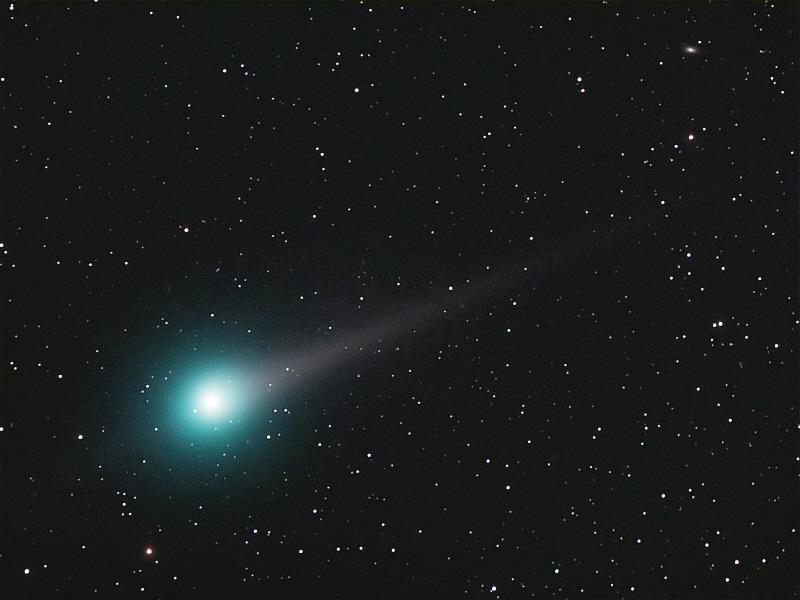"Comets, importing change of
time and states,
Comet Lulin was discovered by a 19 year old Chinese student named Quanzhi Ye. Ye, a student at Sun Yatsen University in mainland China, discovered an object that looked like an asteroid on images taken by Chi Sheng Lin of the National Central University of Taiwan. The discovery image was made on the night of July 11th, 2007. Confirmation images taken a week after the discovery images showed a coma, establishing the object was a comet and not an asteroid. The comet is named for the Lulin Observatory in Taiwan, where the discovery image was taken. The striking aquamarine color of the inner parts of Comet Lulin is due to fluorescing CN and C2 molecules. The dust tail shines by reflected sunlight. The material in the tail of the comet is very rarified. The density of material in the tail is actually less than the density of the best artificially created vacuums on earth. Although there are a number of faint galaxies in the above image that appear almost star-like, the only prominent galaxy is NGC 4546 near the upper right hand corner of the image. It is tens of thousands of times farther away than the foreground stars of our galaxy. These stars are in turn hundreds of thousands of times farther away than the comet. Typically there is a lot of hyperbole associated with the sighting of a new comet, and marketers are quick to try and turn a profit. I recently ran across an advertisement I saved in a scrapbook for a "Comet Telescope" that came out during the last return of Halley's Comet. Click here to see the ad.
|
|||||||||||||||
